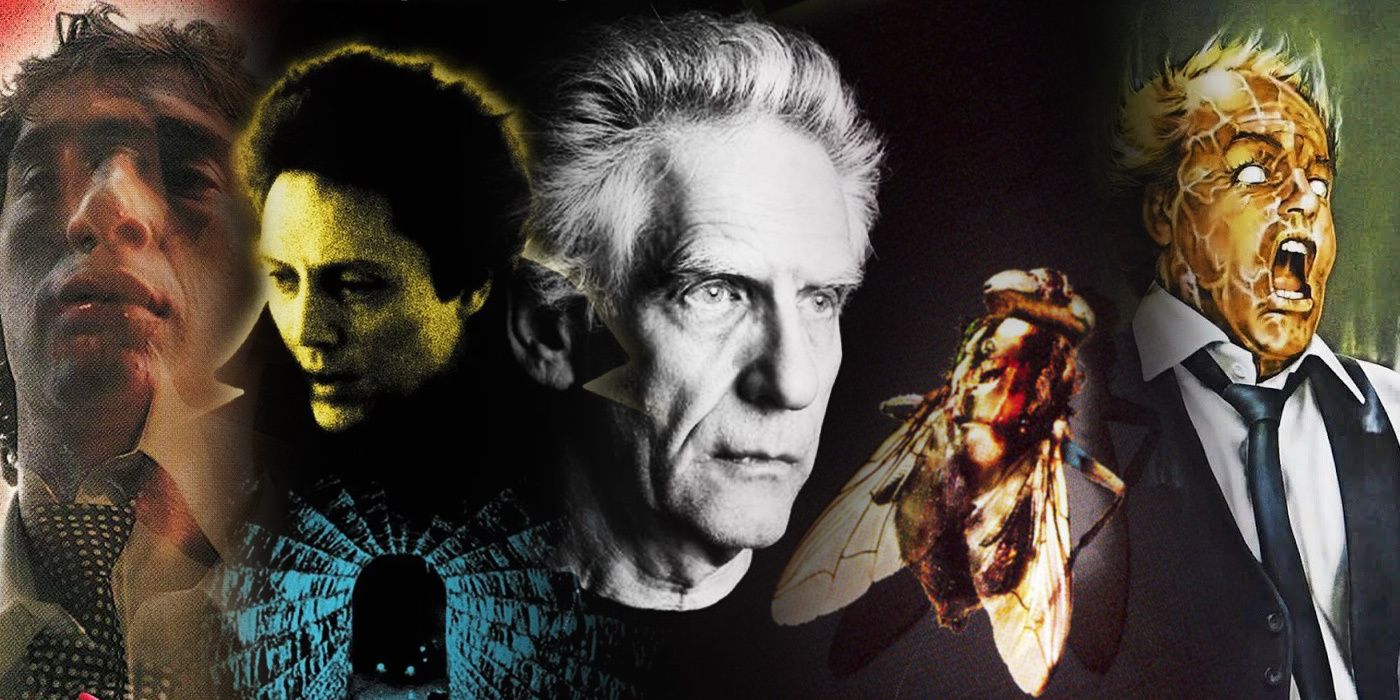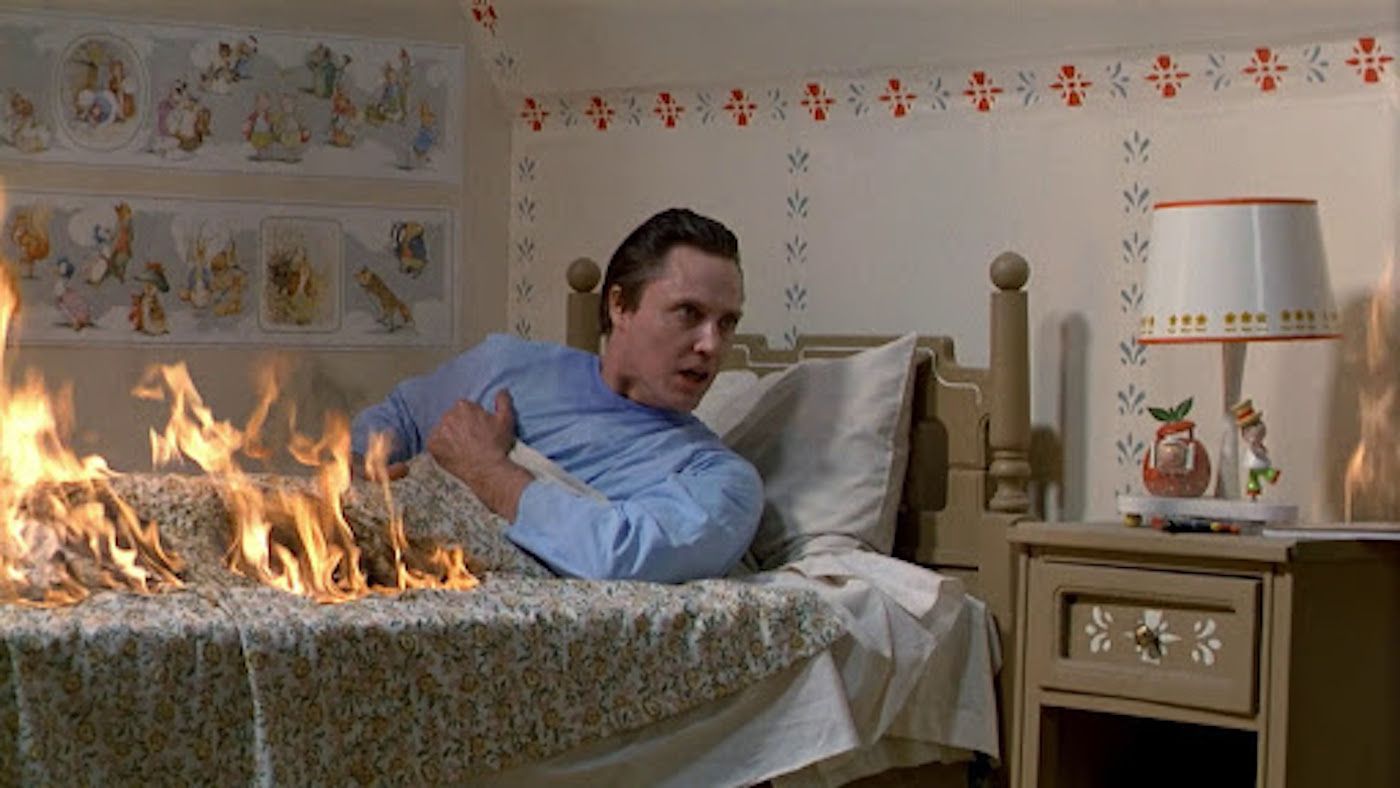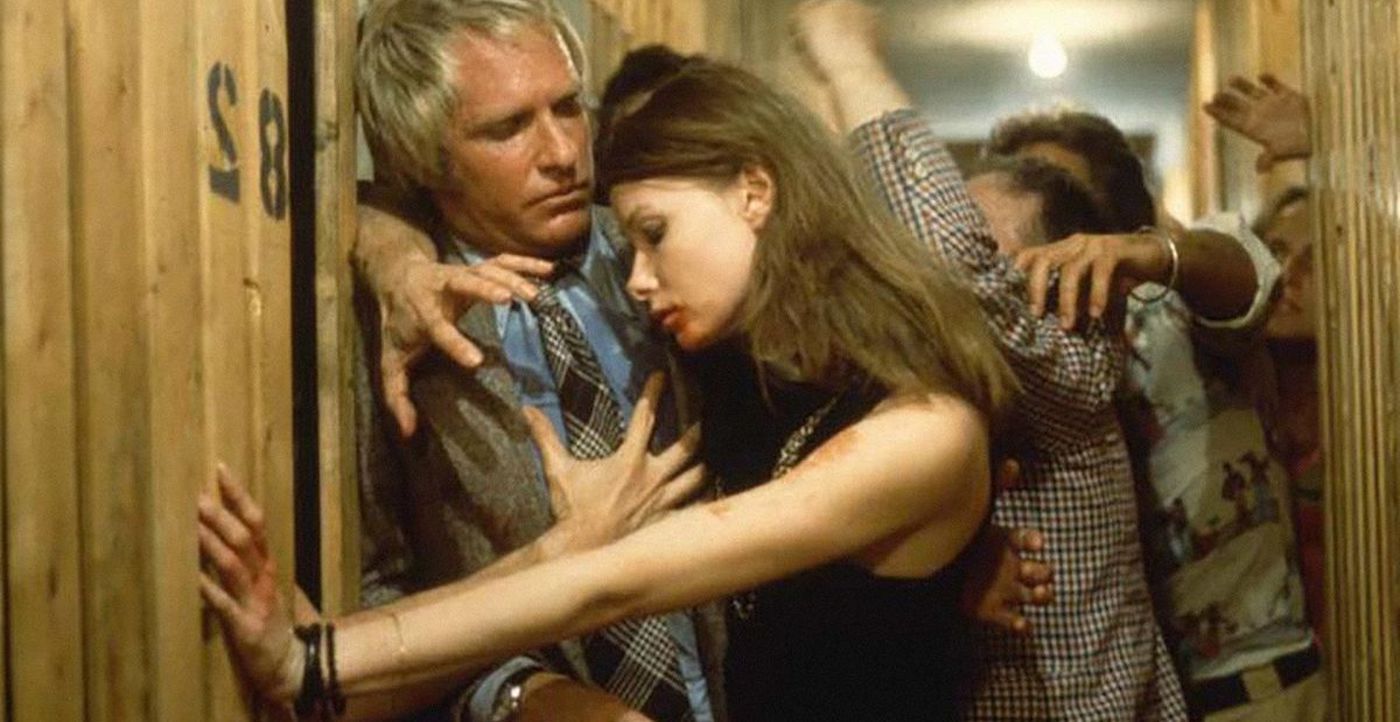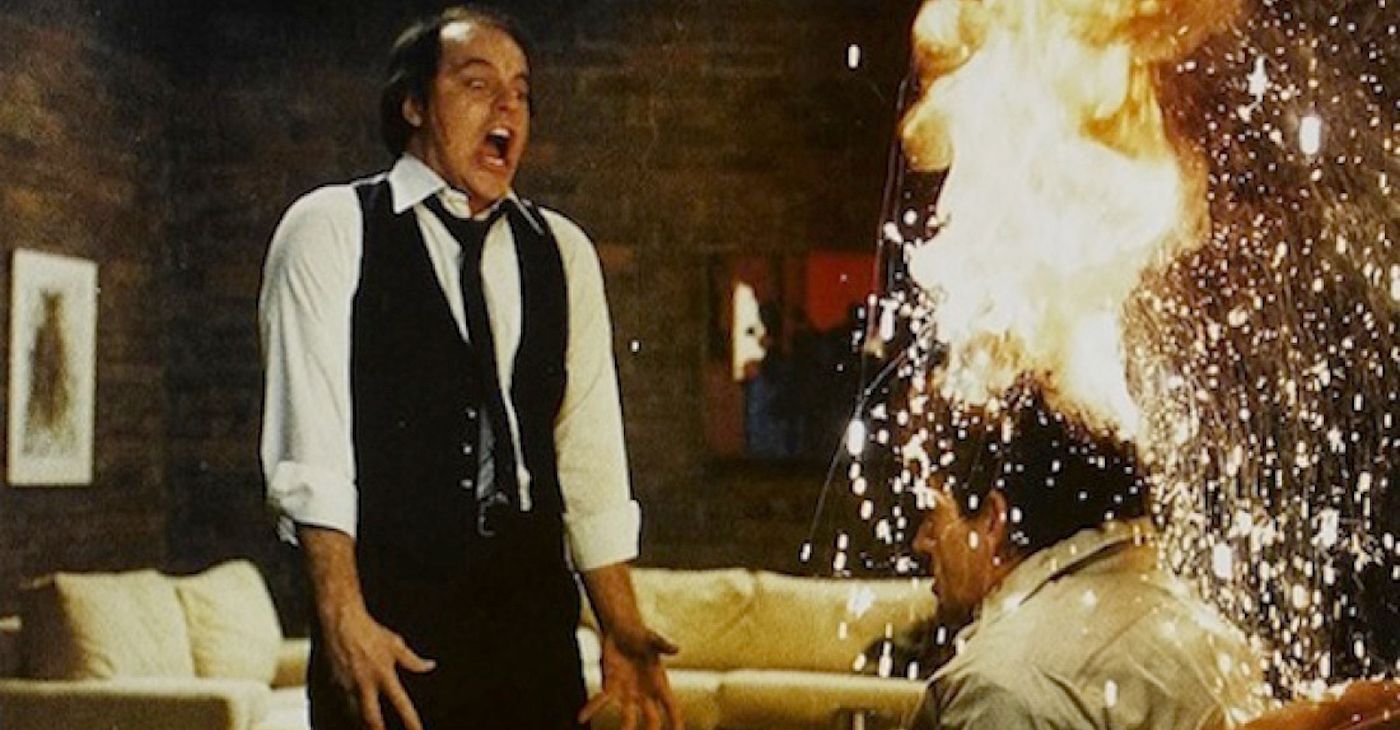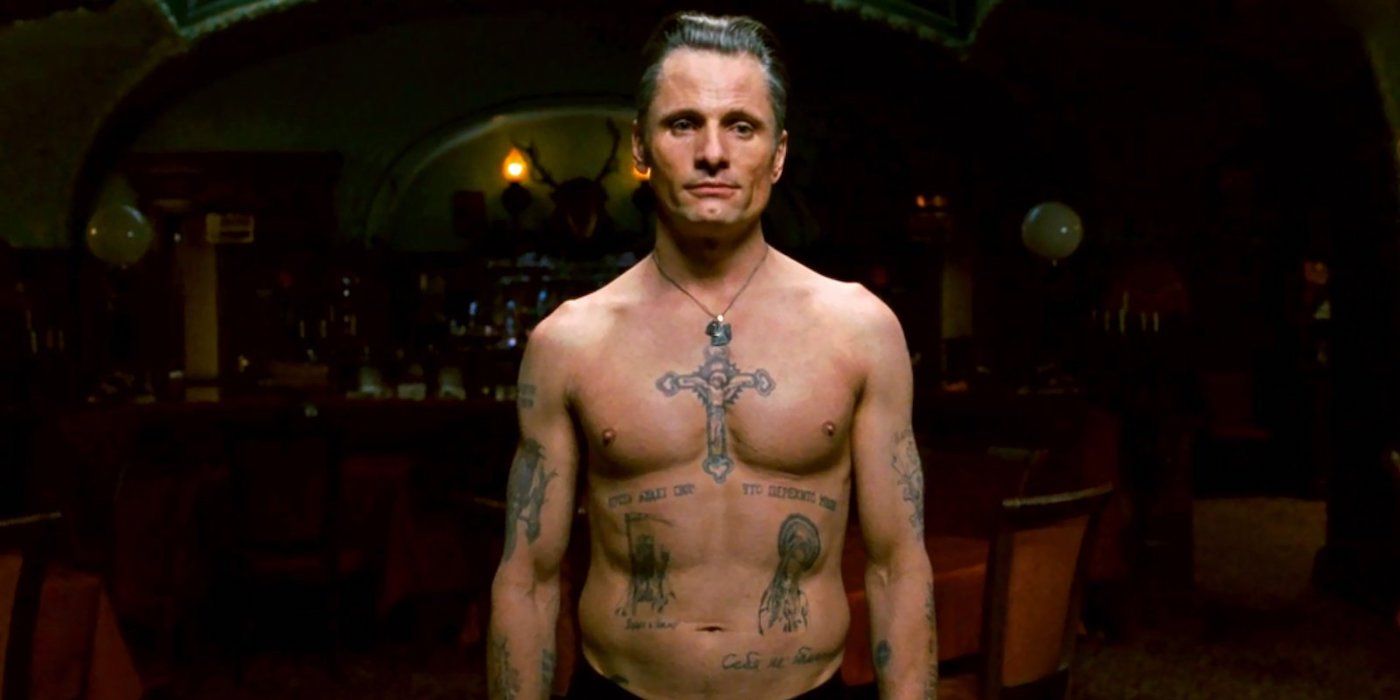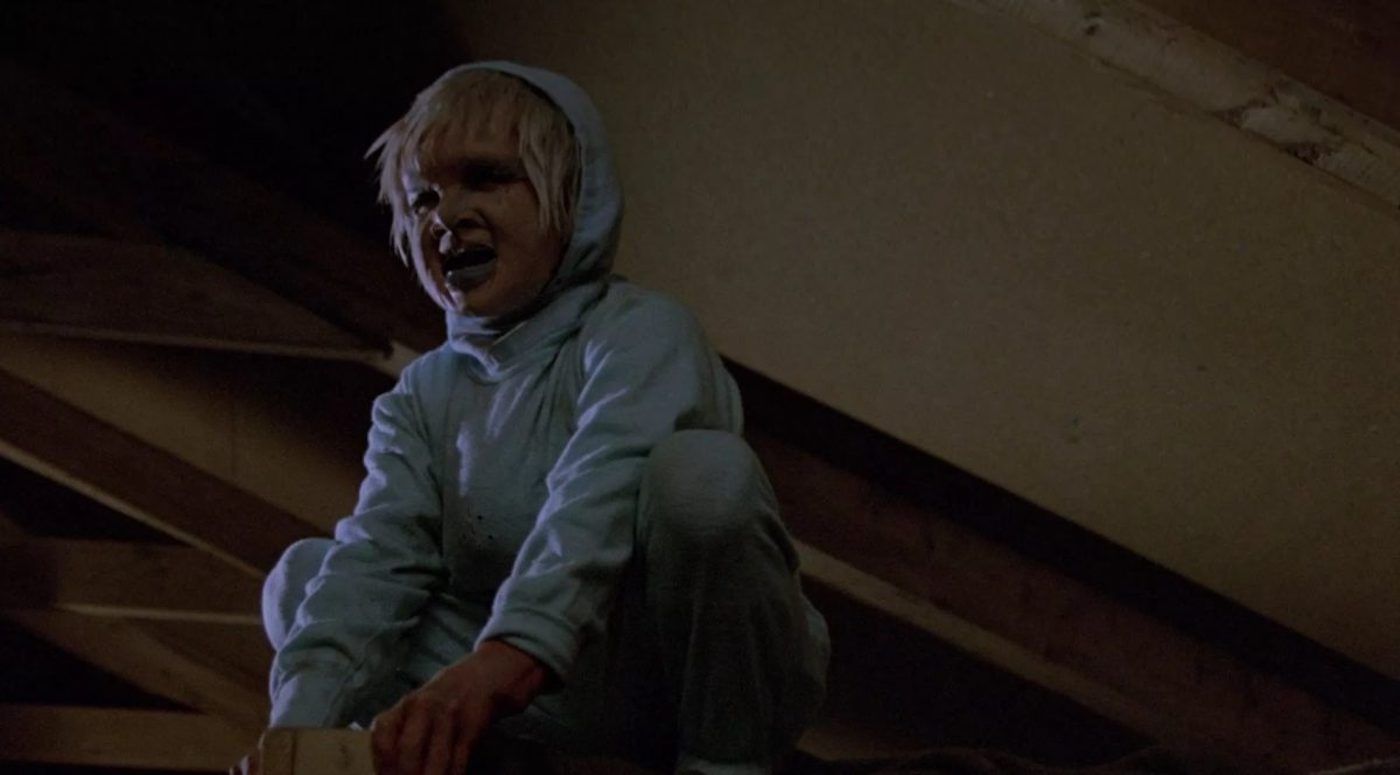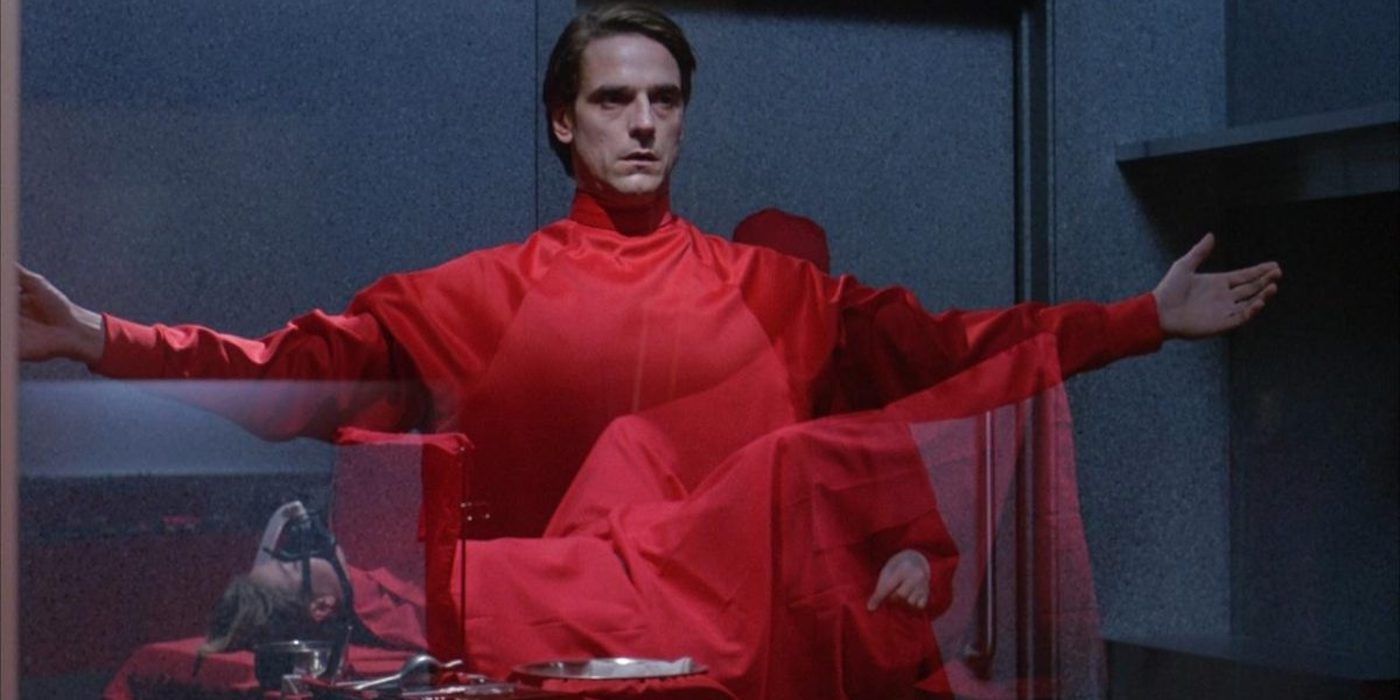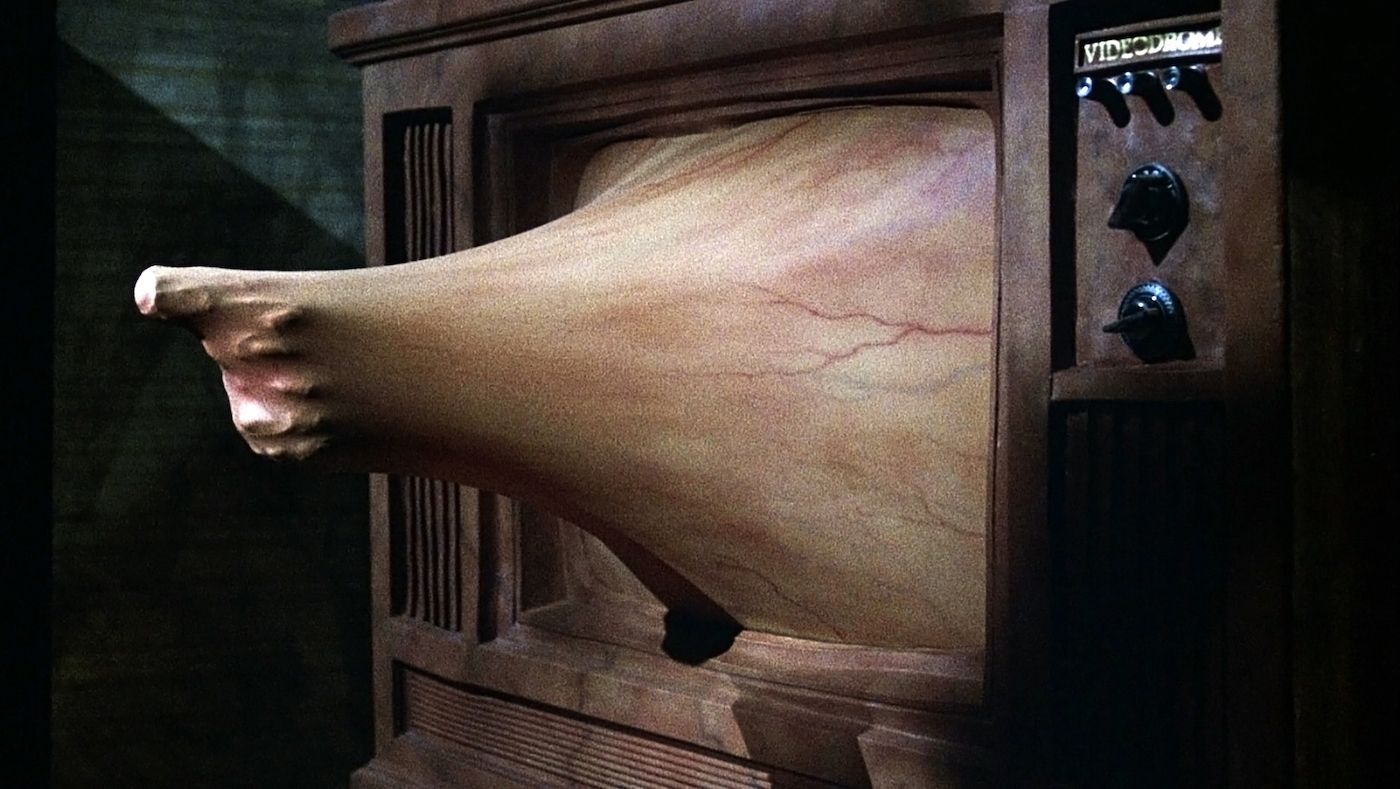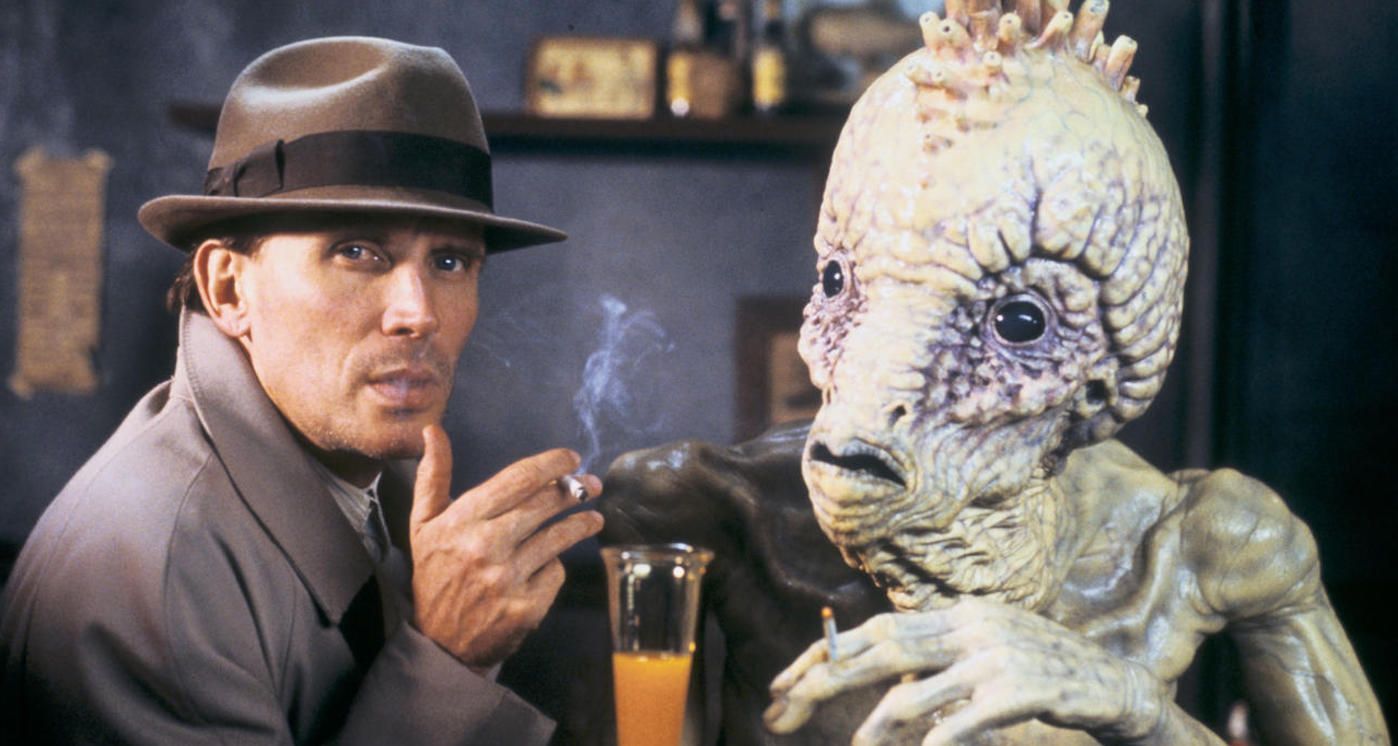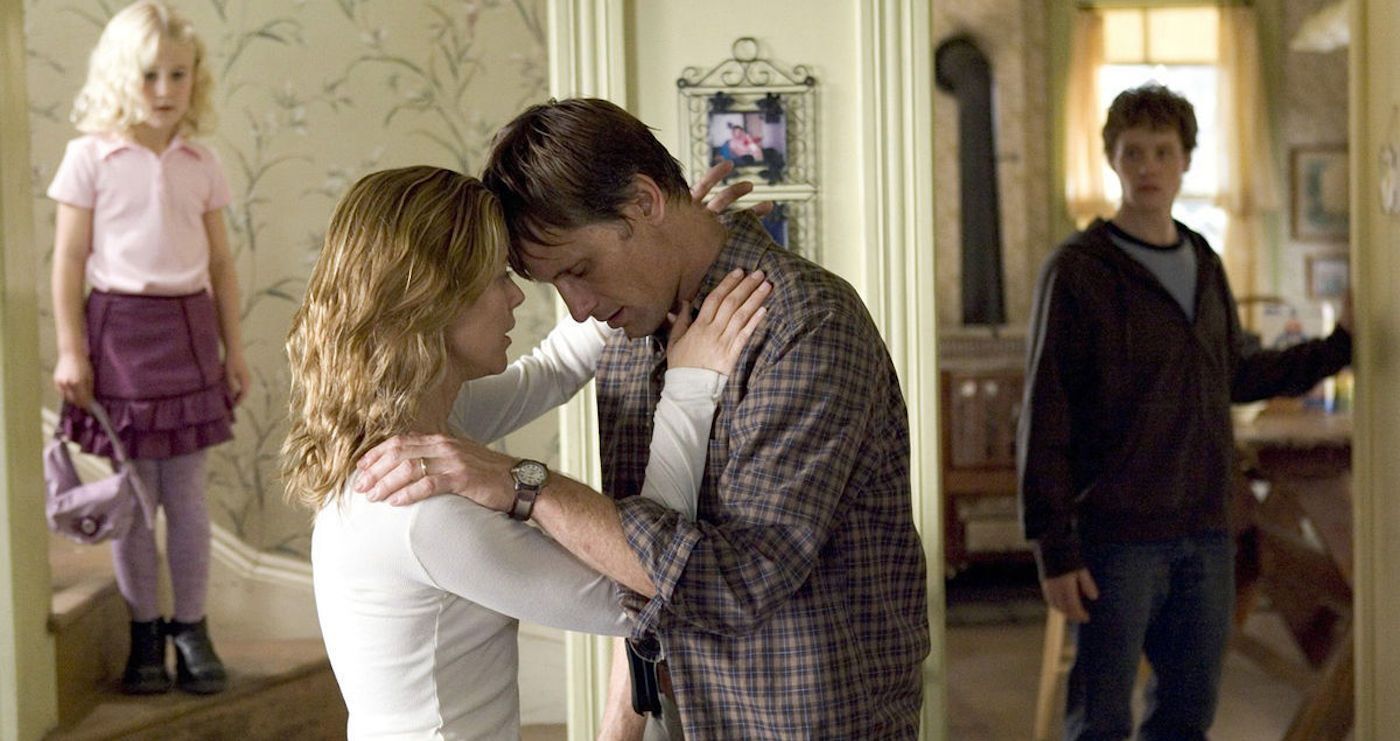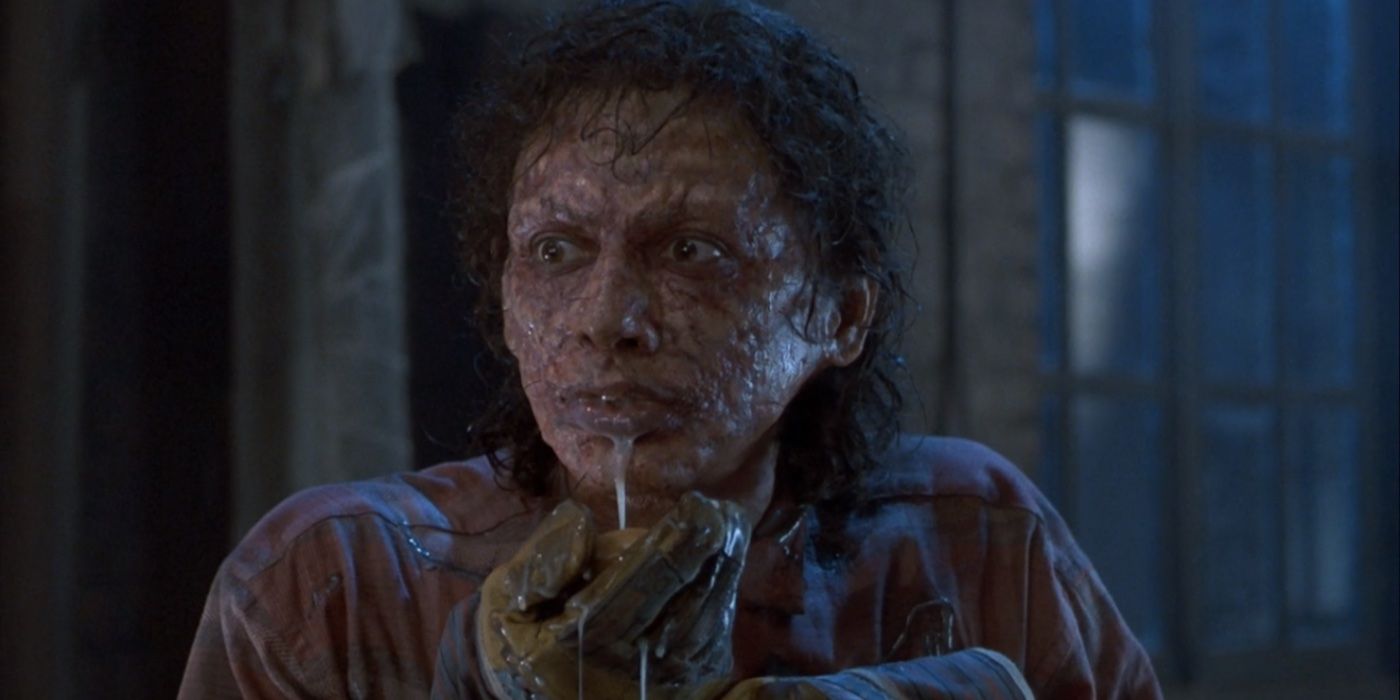For five decades, writer-director-actor-producer David Cronenberg has been making some of the most fascinating, terrifying, and downright disturbing movies in the history of the medium. Famous for his mind-bending 1980s body-horror movies (The Brood, The Fly, Videodrome), Cronenberg has since transitioned into making some intriguing films that defy easy genre categories. His controlled, antiseptic style remains intact, however, along with his attention to his major themes: radical, physical or mental transformations, bizarre conspiracies, malevolent doctors, and psychotherapists.
Cronenberg currently appears as the mysterious Federation operative Kovich on Star Trek: Discovery and is in post-production on his first feature film since 2014’s Maps to the Stars, an apparent update of his early feature Crimes of the Future, starring Naomi Watts and Viggo Mortensen.
To celebrate his return to directing, here are the ten best David Cronenberg films, ranked.
10. The Dead Zone
After spending half the ‘70s directing for Canadian television, Cronenberg made his early low-budget horror classics, Shivers and Rabid. By 1983, we had already seen such early Stephen King adaptations as Brian DePalma’s Carrie and Stanley Kubrick’s The Shining. Mega-producer Dino De Laurentiis tapped Cronenberg to direct what, on paper, seems like something far out of his wheelhouse. Released in the same year as Videodrome, The Dead Zone may be wildly different from that film when it comes to the subject, but Cronenberg’s icy, clinical style begins to mature with these features.
Cronenberg streamlines the narrative of King’s bestseller, with a fantastic, grounded Christopher Walken starring as school teacher Johnny Smith, who gains terrifying psychic powers after waking from a coma. The director reportedly used the classic Americana of Norman Rockwell paintings as a way into the idyllic New England setting. Cronenberg upends Johnny’s American dream at every turn: he loses his future, his girlfriend (Brooke Adams) marries someone else, and his body slowly deteriorates. He loses what’s left of his life after he shakes hands with the Trump-like congressional candidate Greg Stillson (Martin Sheen), who will one day start a nuclear war. King wanted to find a way to have the reader feel empathy for an assassin, and Cronenberg focuses on Walken’s increasingly-haggard face to illustrate the price of his “gift.” He may save the world, but his dreams are forever out of reach.
9. Shivers
Shivers — also released under the delightfully campy title They Came From Within — was produced by the director's longtime friend and fellow Canadian, Ghostbusters director, Ivan Reitman. A twisted, amoral doctor (a trope Cronenberg will keep revisiting) creates a disgusting parasite, which spreads through a luxury Montreal highrise. The infected become raging sex maniacs, committing violent sexual assaults on anyone they come across.
The trademark Cronenbergian body horror would become much more sophisticated as his budgets increased, but even this early on, he is anything but squeamish. It’s tempting to read a blunt critique of the hedonistic early ‘70s into the subtext of Shivers, but there is something more complex at work. The doctor’s first victim was a student he had been sexually abusing for years, since she was a pre-adolescent. The parasites which originate within her physiology form a physical manifestation of this abuse, a motif that Cronenberg will also revisit many times, notably in The Brood.
8. Scanners
Famous for its exploding heads, Scanners inspired a cult following almost as soon as it was released in 1981. Scanners is less a horror film than a gore-laden sci-fi/paranoid thriller and featured some of Cronenberg’s favorite tropes and themes pumped to queasy life via a relatively large budget.
The private security company ConSec recruits the mentally-disturbed telepathic/psychokinetic Cameron Vale (Stephen Lack) (who is a “scanner” due to his abilities) in their fight against Daryl Revlock (RoboCop’s Michael Ironsides), another “scanner” who leads an underground band of scanner criminals. Scanners is possibly the closest to a mainstream thriller plot Cronenberg could deliver. Sinister corporations, a conspiracy involving medication used on pregnant women to create more scanners, consciousness-swapping abilities: these elements can be found scattered across many of his later films. Scanners spawned a franchise that withered into direct-to-video fare like Scanner Cop, but this first one remains a favorite.
7. Eastern Promises
Remembered today for a brutal, naked fight scene in a London bathhouse, Eastern Promises is one of Cronenberg’s biggest swerves away from his body-horror origins. Written by Peaky Blinders and Taboo contributor Steven Knight, the film delves into the London underworld as midwife Anna (Naomi Watts), searches for the family of a baby whose mother died in childbirth. This leads her to Nikolai (Viggo Mortensen), a driver and bodyguard for a Russian mob outfit. Eastern Promises finds the director channeling more kinetic energy than usual, even as his cerebral style tracks the subtleties of the stars’ performances. Mortensen, in particular, is as committed as ever (down to his well-researched tattoos). Like his small-town diner owner, Tom Stall, in A History of Violence, Nikolai is hiding a whole different side to his life and has more to lose than anyone guesses. Eastern Promises belongs on any list of great crime movies.
6. The Brood
Written by Cronenberg in the aftermath of his acrimonious divorce, The Brood hones in on the physical effects of trauma and the existential terror that can come with being a parent. The film also finds Cronenberg developing two themes he would further develop in films like Naked Lunch and Dead Ringers: megalomaniacal doctors and the ways the mind can manifest truly horrifying things into the physical world.
Frank Carveth (Art Hindle) is in the middle of a bitter custody battle with his wife, Nola (the brilliant Samantha Eggars), who is under the care of psychotherapist Dr. Hal Raglan (Oliver Reed), and living at Raglan’s Somafree Institute. Raglan’s methods are highly questionable to say the least, involving a method of therapy he calls “psychoplasmics” in which patients deal with their psychological trauma through physical changes. What does this have to do with a roving band of tiny killers in snowsuits? The reveal of how the severely disturbed Nola is manifesting her pain and frustration is among the most shocking moments in Cronenberg’s entire filmography.
5. Dead Ringers
Inspired by the true story of identical twin New York City gynecologists who were found dead together in their suave Manhattan apartment, Dead Ringers marked Cronenberg’s first shift out of the core horror genre and into complex psychological thriller territory.
Starring Jeremy Irons as Beverly and Elliot Mantle, Dead Ringers has lost none of its haunting power. Bev and Elliot are high-society OBGYNs, at the top of their game. Bev is insecure and shy, often letting Elliot impersonate him. As Bev’s mental state deteriorates, Elliot assumes a dominant role, but Bev’s attachment to an actress (Genevieve Bujold) complicates their lives. Dead Ringers retains Cronenberg’s horror touches, such as a horrifying array of gynecological instruments that Bev creates for “mutant women.” Their chilling decline leads to a quiet and ambiguous ending, inviting the viewer to wonder about the true nature of identity and how it relates to the depths of the Mantle twins' psychosis.
4. Videodrome
Released in the same year as The Dead Zone, Videodrome is so different from Cronenberg’s Stephen King adaptation, it might as well have been beamed in from another planet. When small-time cable TV programmer, Max Renn (James Woods), discovers an underground signal called Videodrome, the sadomasochistic, snuff-like content excites him. He discovers that Videodrome carries a signal which causes a malignant brain tumor and is part of a larger conspiracy designed to eliminate a large portion of the North American population.
Videodrome’s body horror is linked to the “breathing” Betamax tapes used to reprogram Max, just one of the incredible effects devised by An American Werewolf in London maestro Rick Baker. The deranged conspiracy involving mass reprogramming and the notion of TV literally rotting people’s brains feels like a sly parody of such concerns among culture warriors in the ‘80s. Cronenberg’s daring is still a wonder to behold, as he abandons his wild conspiracy plot to follow Max down the rabbit hole of his own hallucinations.
3. Naked Lunch
Drug addict and pest exterminator William Lee (Peter Weller) develops an addiction to his pest-control bug powder and hallucinates a talking typewriter-insect hybrid creature that gives him orders. The hallucinatory narrative leads Lee to the creepy Dr. Benway (Roy Scheider, playing the apex of Cronenberg’s evil medical professionals), large green monsters called Mugwumps, and the sinister city of Interzone, somewhere in North Africa.
The extreme surrealism of William S. Burroughs’ mind-warping 1959 novel Naked Lunch seems utterly unfilmable, but Cronenberg manages an incredible mind-meld with the Beat author in his 1991 adaptation. The director plucked events from Burroughs’ personal life (the accidental shooting death of his wife, Joan Vollmer) and selected aspects of other Burroughs books and stories (Junky, Exterminator!) to craft a rough plot. Of all his films, this one defies any genre placement. Is it a drug movie? Yes. Body horror? Definitely. Psychological thriller? Sure. It’s also unlike any other movie in those genres. Naked Lunch was a box office failure but lives on as a thoroughly compelling experiment at melding Cronenberg's sensibilities with that of Burroughs, resulting in one of the strangest films ever made.
2. A History of Violence
Cronenberg returns to his version of small-town America with A History of Violence. Diner owner, Tom Stall (Mortensen), has his entire life upended after he dispatches two sadistic criminals with shocking ease. News of the event makes Tom something of a celebrity and attracts the scary Irish gangster Carl Fogarty (Ed Harris), who claims Tom is actually a Philadelphia hitman named Joey Cusack. Tom soon learns that he cannot escape his past, no matter how long he works at it and how hard he tries.
Like David Lynch with Blue Velvet, Cronenberg carefully peels away the thin layer of civilization in a small town and exposes the raw potential of violence in everyday America. Loosely adapted from a graphic novel by screenwriter Josh Olson (and heavily rewritten by Cronenberg), A History of Violence features plenty of the director’s signature unflinching approach to violence and gore, including a great final set piece in Philly. Tom goes to confront his past in the form of his brother Richie, played by an Oscar-nominated William Hurt, resulting in an explosion of violence that feels preordained. The film’s heart remains with Tom and his family, as his wife Edie (Maria Bello) must reconcile her husband’s hidden past and personality.
1. The Fly
A brilliant and eccentric scientist named Seth Brundle (Jeff Goldblum) meets journalist Ronnie Quaife (Geena Davis). As the two fall in love, Brundle cracks his revolutionary teleportation project, successfully transporting himself from one “telepod” to another. Unfortunately, a fly transports along with him. The computer fuses Brundle and the fly at the molecular-genetic level, causing him to transform into something else entirely.
Updating the campy 1958 original, in 1986’s The Fly, Cronenberg crafts his most successful fusion of suspense, body horror, and human drama. Goldblum turns in possibly his greatest performance, moving from awkward to freakishly over-confident to essentially inhuman. The special effects remain stunning more than 35 years later, from the inside-out baboon (an unfortunate result of a failed early telepod test) to the final, horrific form of “Brundlefly.” The most affecting part of The Fly is the horrible interruption to the central love story. Goldblum and Davis were a couple at the time and would marry the year after The Fly’s release. Cronenberg draws remarkably honest performances out of both of them, creating a relationship that feels fresh and real. This makes the ending all the more sad and tragic, making it Cronenberg’s best film to date.

